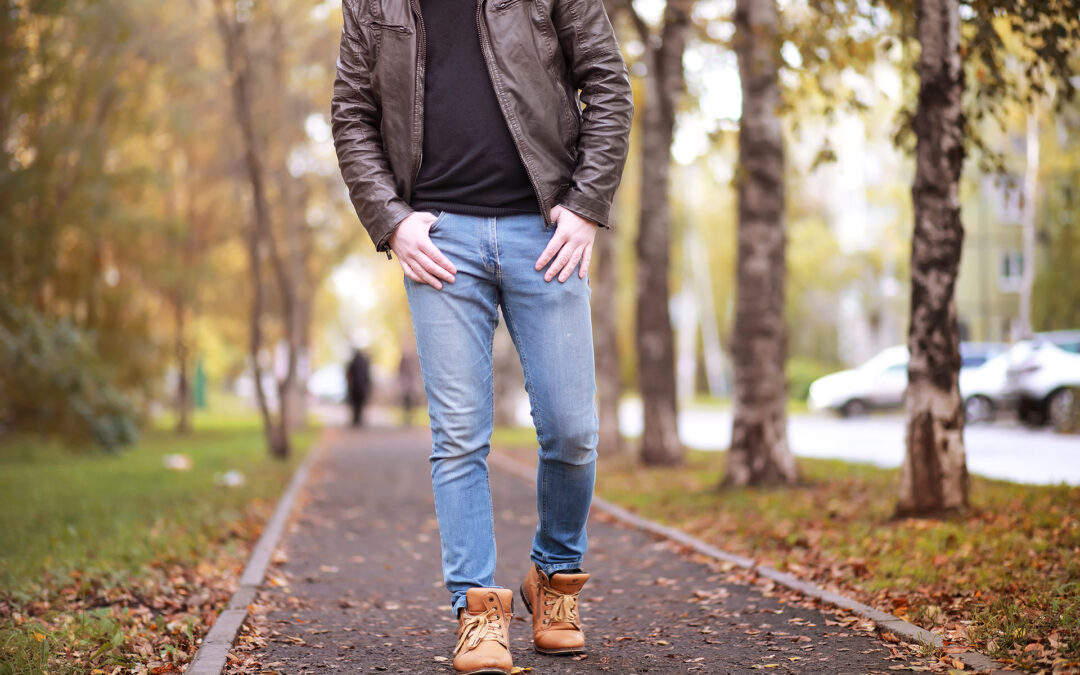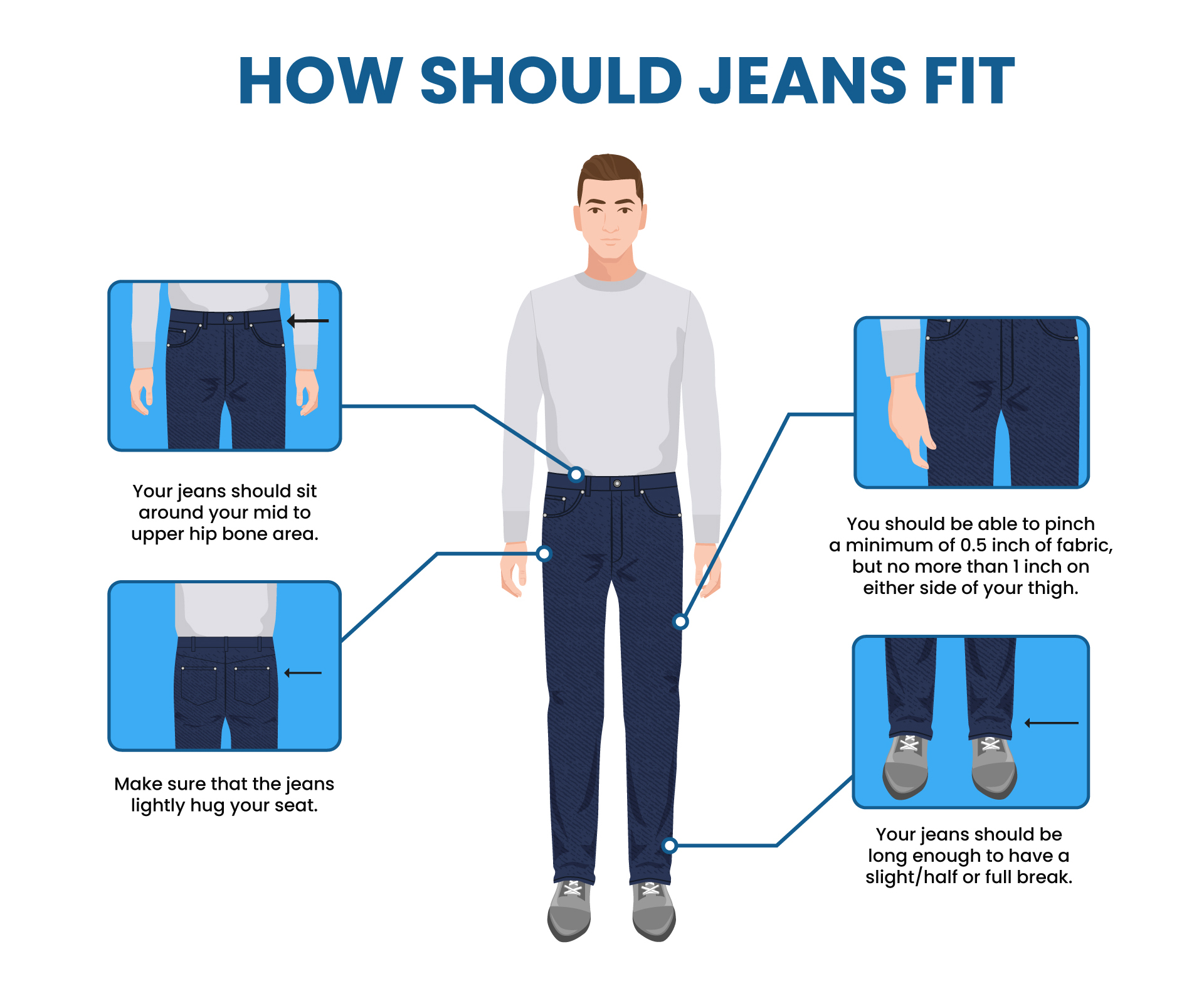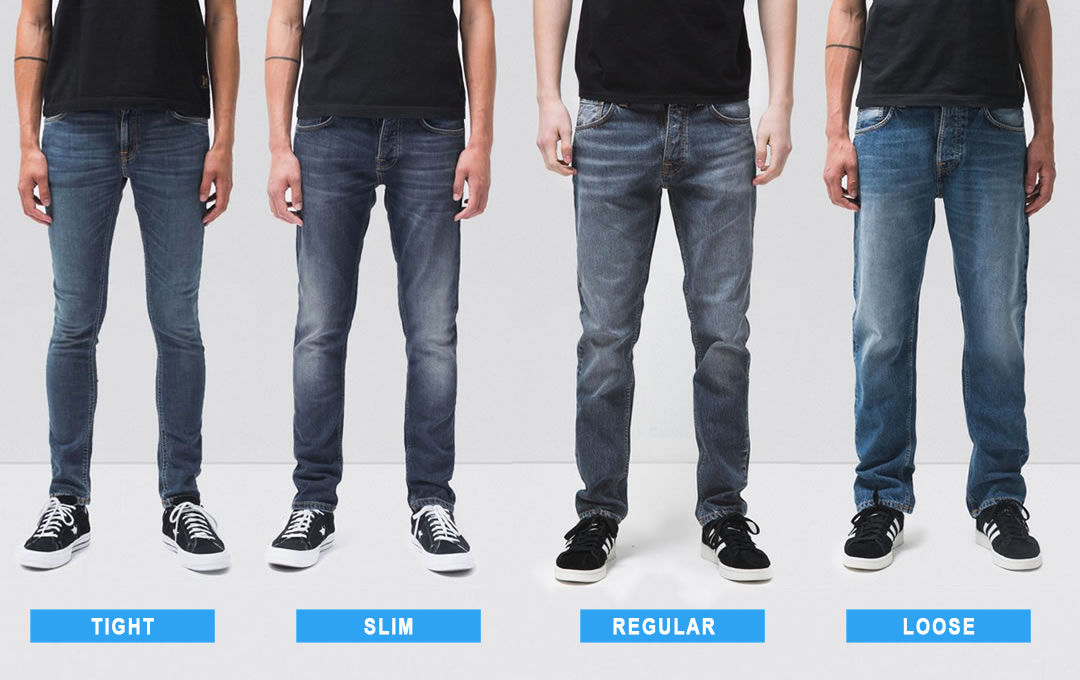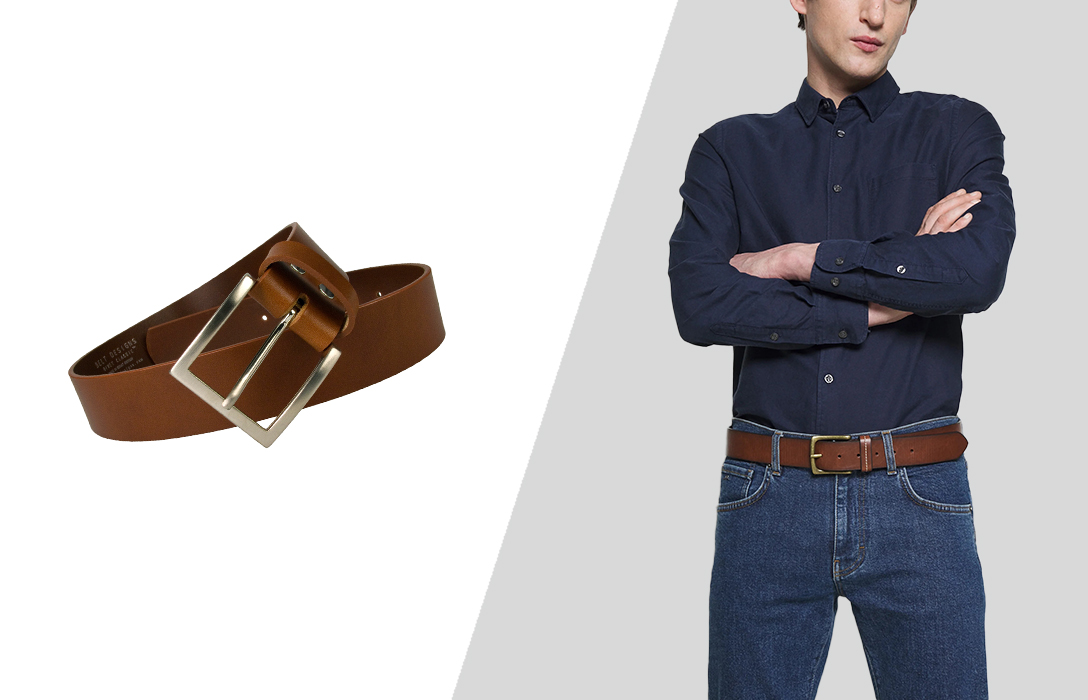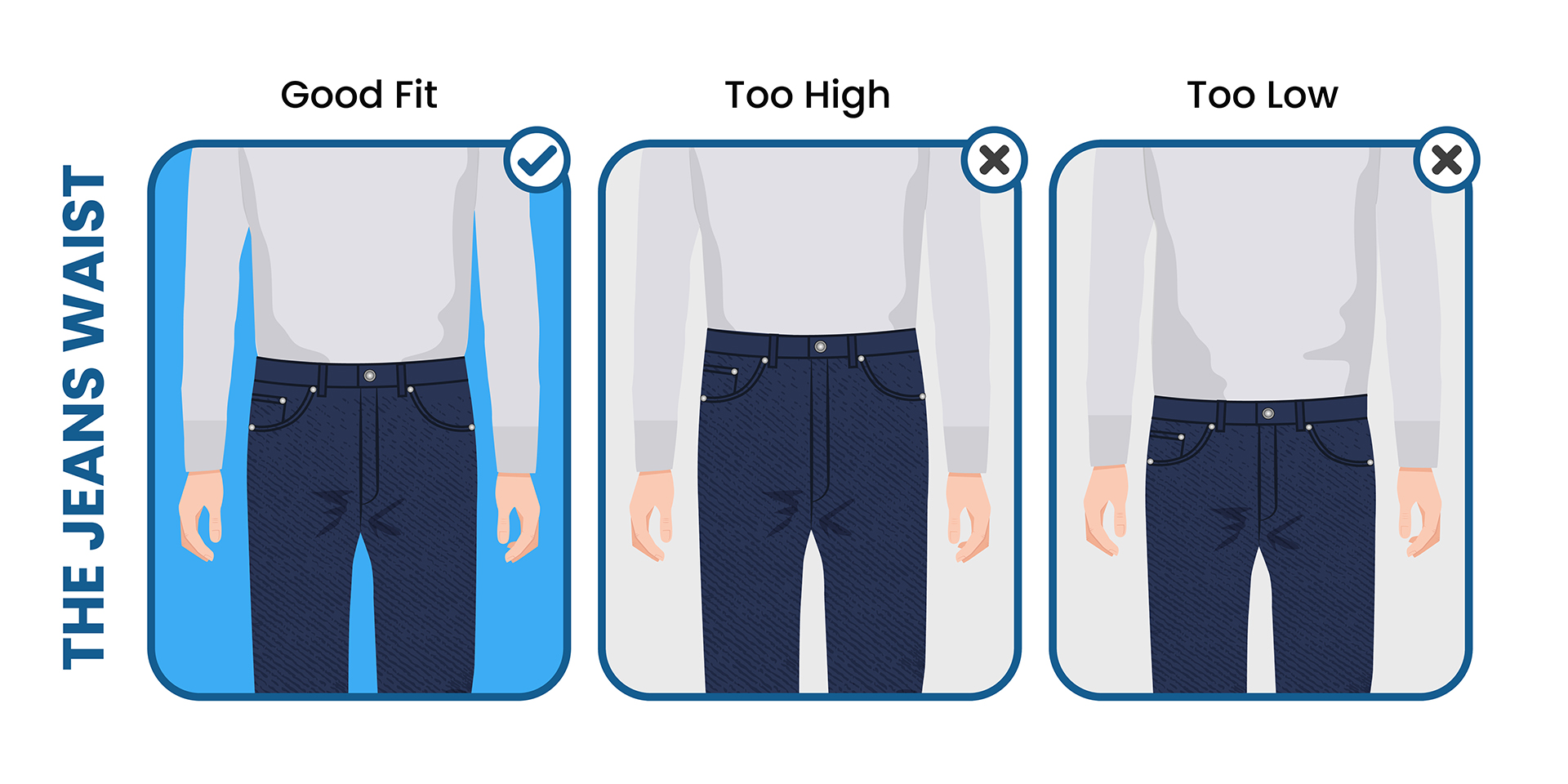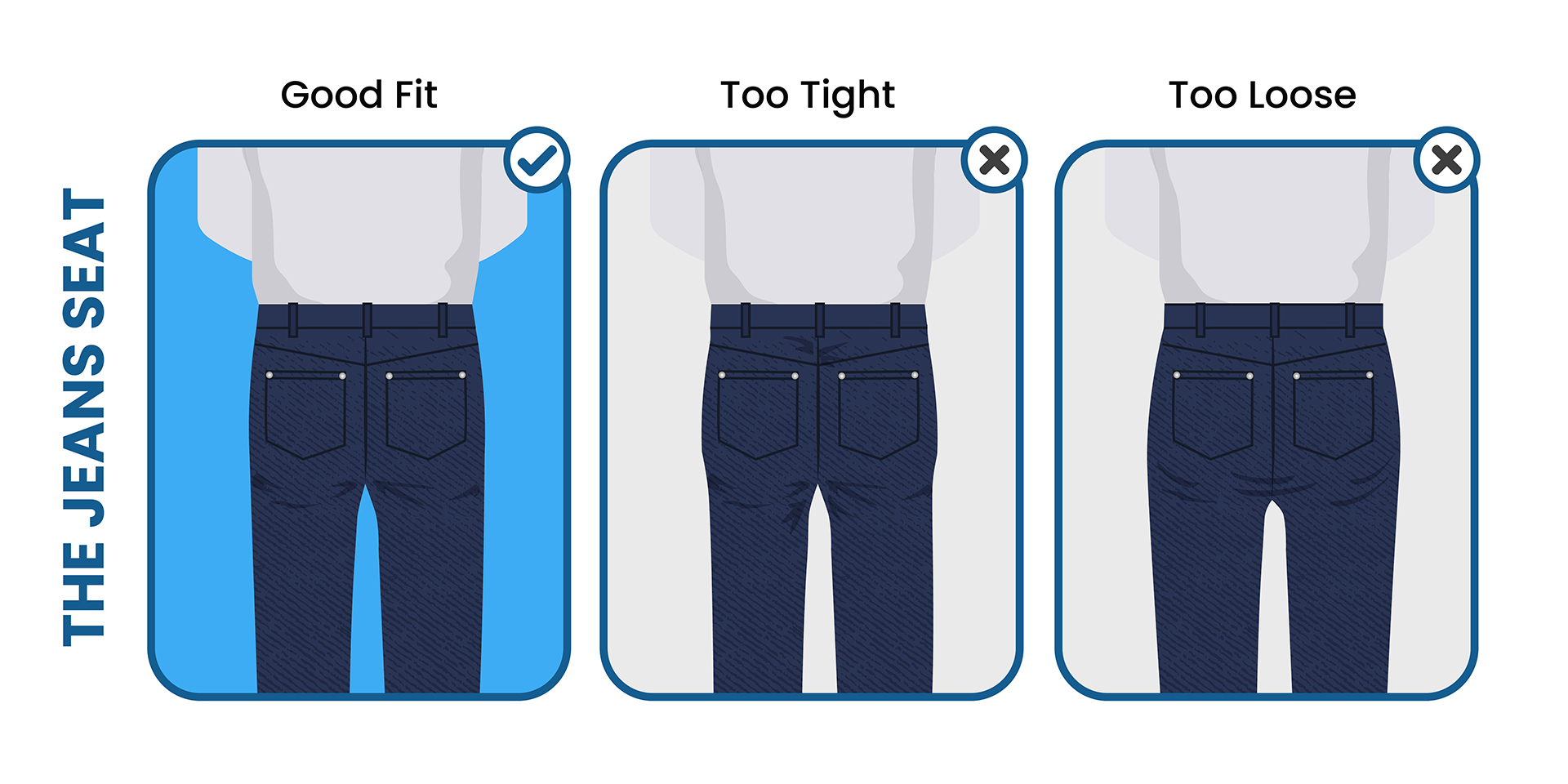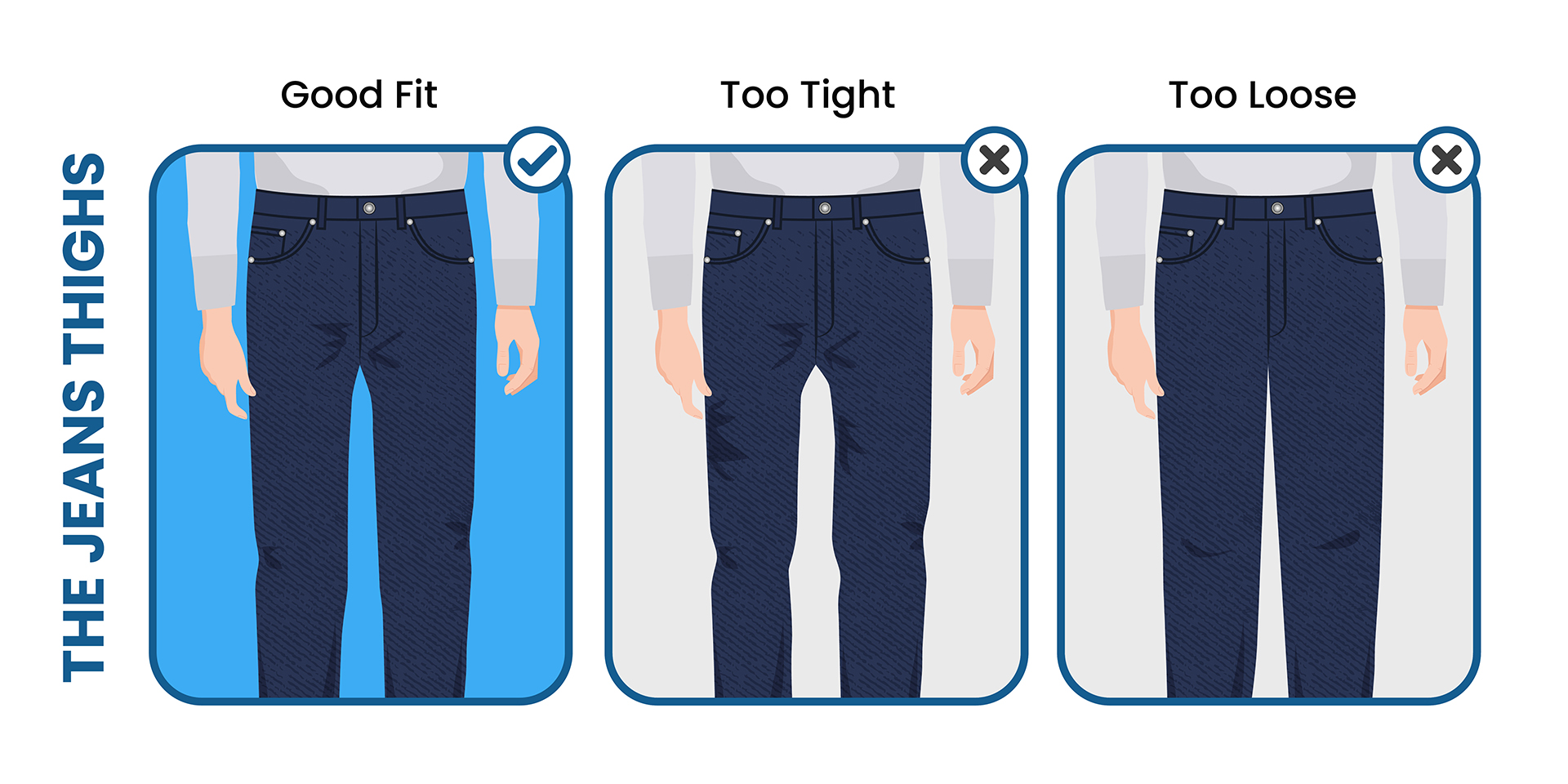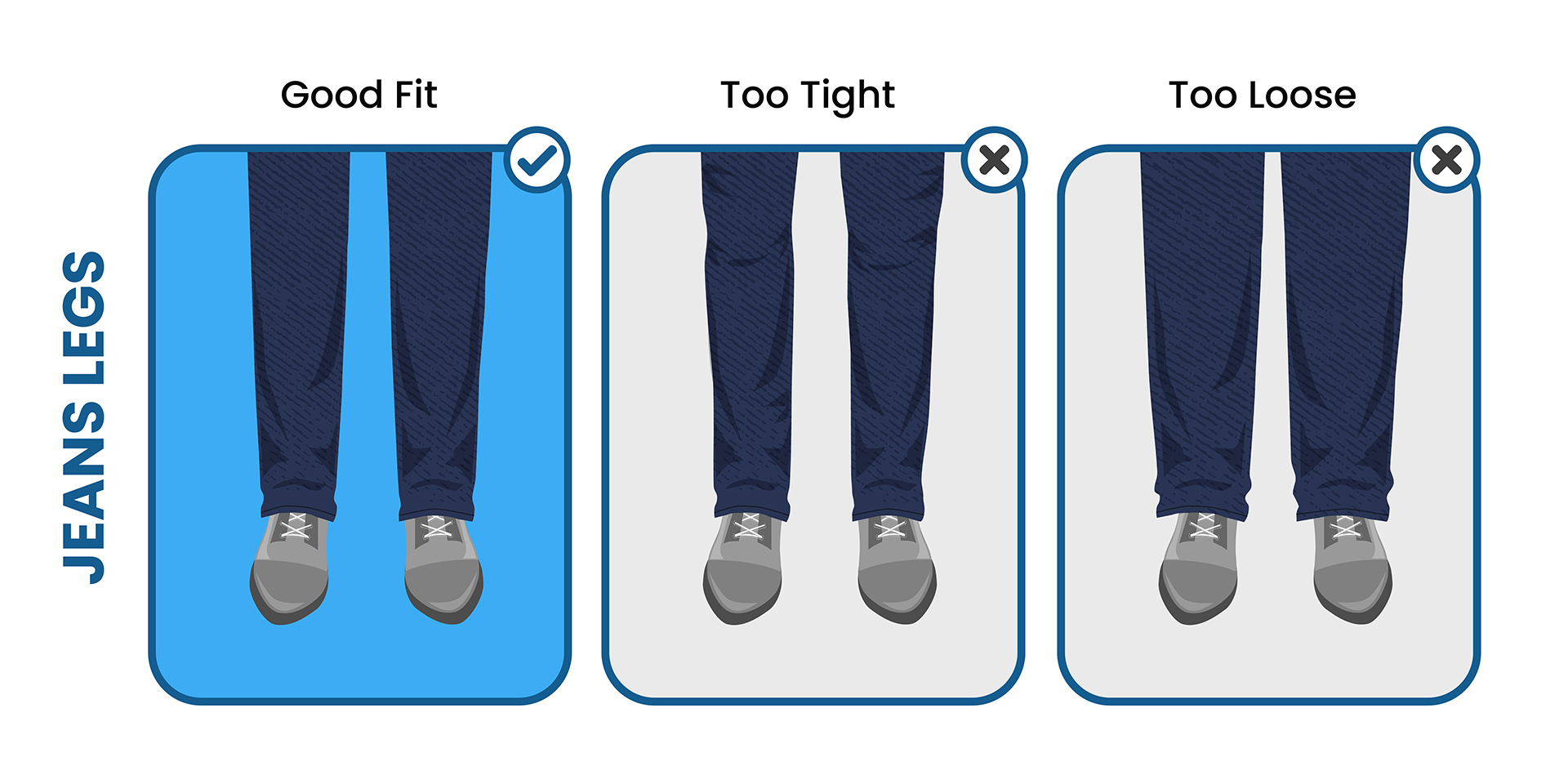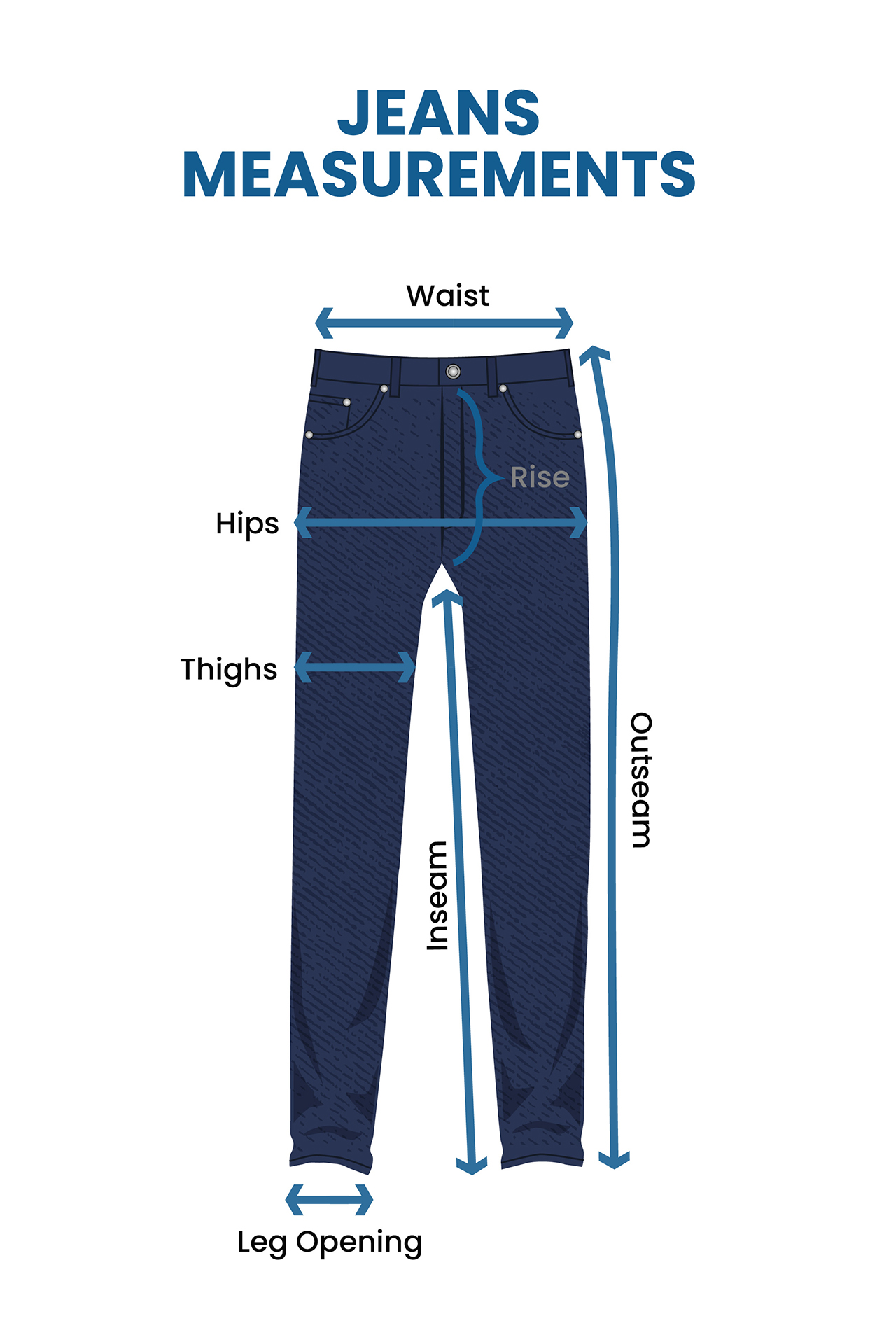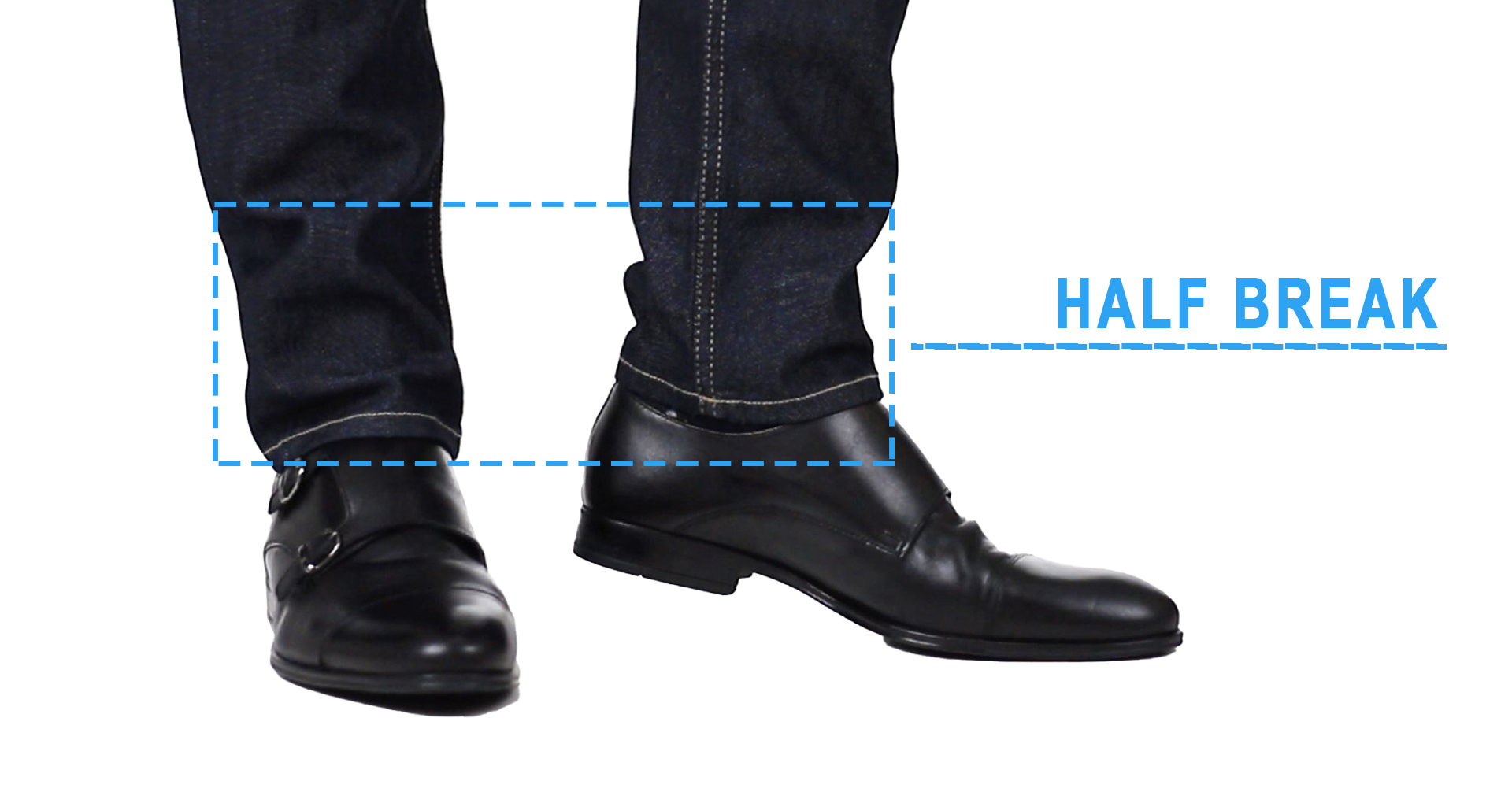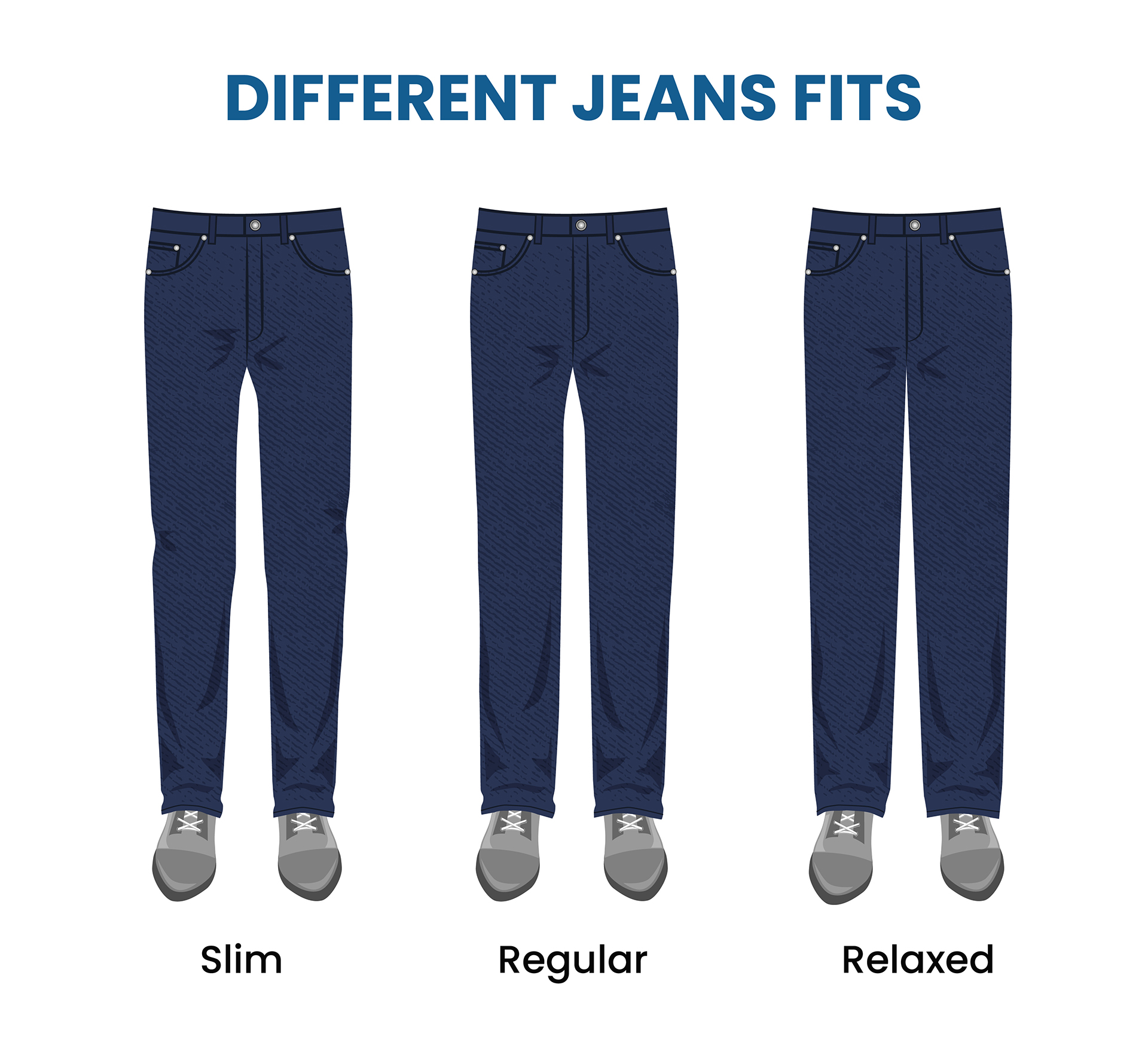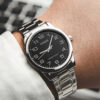You may not give much thought to how jeans fit.
You may think you’re golden if they stay up around your waist and you don’t trip over them. But not quite.
Sure, they may be functional, but do they look good?
This casual staple can become the most versatile garment in your wardrobe, transitioning from ultra-casual to dressy casual; first, they must fit really well.
Jeans Fit: The Basics
When it comes to your jeans, the fit is more than just waist and length. It is about every single part of your pants fitting correctly.
However, finding a good fit can be challenging since most jeans are sized only by waist and length measurements.
All the parts of your jeans must sit well on you. Otherwise, you won’t look appropriate. What good is finding the ideal length jeans if their butt is saggy?
And, of course, you won’t feel right, either, if your jeans are a poor fit. So comfort is a critical factor in well-fitted jeans.
Fitted Jeans are Different From Tight Jeans
Fitted jeans may give some people the wrong impression of how they should fit.
All it means is that the jeans fit well; they aren’t too tight or loose. They are exactly right. Your jeans should be comfortable and allow ease in your movements.
Tight jeans are easy to spot. They show it all and leave little to the imagination.
That’s fine for some people, but for the most part, we shouldn’t be able to see your body parts through your jeans.
You should also be able to breathe and move well.
Avoid Wearing Jeans that are Too Big
Your waist should be loose enough that you don’t need to squeeze your stomach when you button them but not so loose that they fall too low on your hips.
You should not need to use a belt to hold your pants up.
Also, pay attention to the size of the legs. Some wide-legged jeans are acceptable. But if you could fit both legs into one side of the jeans, that’s bad.
Instead, find a pair that isn’t as large. They may be comfortable, but they’re also sloppy.
Finally, be cautious if you notice jeans with lots of extra fabric and folds. They’ll create the appearance that you’re swimming in your jeans.
Jeans Waist Fit
The waistline of your jeans should naturally fall at the top of the middle of your hips. They shouldn’t sit quite as high up as your suit pants would.
Since jeans are more casual than dress pants, a lower fit adds to their relaxed appeal.
Of course, they shouldn’t sit any lower than your mid-hip area, but they also shouldn’t be extra tight on you.
You should not need to suck in your belly when you button your jeans. That looks and feels bad.
To check the fit of your waist, stick two fingers between your body and the waistband. If they can comfortably slide in, you are good to go.
If you struggle to squeeze your fingers in, they’re too tight.
The Jeans Seat
Please, be sure that the seat of your jeans doesn’t sag at all.
If you find that you have lots of room under your butt, between the fabric and your body, the jeans are too large for you. You should not be able to gather a handful of material.
The denim fabric should be smooth across your bottom, with no pulling.
You’ll know that the jeans are too tight if you feel a tug (or worse, a wedgie) when you bend over. You should be able to sit or bend comfortably without the fear of splitting your pants.
The Jeans Thighs
The thighs of your jeans should fit similarly to the seat of your pants; they should be smooth with no drooping or pulling.
Can you sit without feeling fabric tightening around your thighs or knees? Perfect!
Can you pinch more than half an inch of material but less than one inch? You’re all set! The thighs fit well.
No matter which fit style of jeans you choose, the thighs should always fit this way.
Jeans Legs Fit
The legs make up most of the garment, so a wrong fit on the legs would be super obvious.
The correct length is critical for looking put together and smartly styled.
In most cases, you’ll be able to see in the mirror when the length is too far off. It often doesn’t feel right, either.
However, jeans drape differently than dress pants, so the length may be slightly more challenging to determine.
Proper Jeans Length Size
Your jeans should probably be shorter than you realize.
However, you definitely want to be sure your jeans cover your ankles and have a bit of a break to them. Too short jeans will cause lines to branch like whiskers from your crotch.
When shopping for jeans, don’t be afraid to err on the side of “too long.” It’s incredibly simple to have them hemmed to the ideal length.
So if the rest of the jeans are a win, don’t let long length hold you back.
But be sure you take care of jeans that are too long. Don’t let the folds of fabric stack up around your calves.
Instead, the fabric should hang straight and smooth down your leg. It helps to know your inseam when you’re shopping for new jeans.
Different Jeans Hem Breaks
Your jeans look best if they have some sort of break, so they just brush the top of your shoe.
However, you don’t want too much of a break. That would end up looking like several folds on top of each other; in other words, too large.
There are a few different styles of pants breaks in various sizes. You can have a full break, meaning you have one deep fold, or dimple, at your ankle.
A half break is a slightly smaller fold but still quite visible.
The smallest break you can have is a quarter break, where the fold is very slight; you almost don’t notice it, but the hem still brushes against the top of your shoe.
Different Jeans Fit Types
Jeans are completely universal; everybody wears them. Therefore, you would think they would all be the same. But no, they aren’t.
Instead, there are many different varieties, cut in different styles to accommodate fashion, body shapes, and comfort levels.
They play up various parts of your lower half and come in different proportions.
Ideally, you should find the fit most flattering to your body type. The best way is most likely to try on several different fits to see what looks best on you.
Relaxed Fit
If you fall firmly on the side of comfort when it comes to your jeans, relaxed-fit jeans are your style. They’re similar to what is more commonly now called “athletic fit.”
They sit firmly at the top of the hips and have wide, roomy legs.
That makes relaxed-fit jeans suitable for men with larger or muscular thighs and rears. However, this style may look too large on thin men.
Some varieties of relaxed-fit jeans may have a slightly tapered ankle. This provides a little shaping to pants that may feel shapeless at times.
Bootcut Fit
These jeans have the widest opening at the ankle, though the thigh area is still somewhat fitted. Can you guess why they’re called bootcut?
Yes, they’re accommodating to cowboy boots, so they are pretty popular for certain men.
Bootcut fit jeans usually have a high waist, sitting further up on the hips than most other jean styles, close to your natural waistline. However, some more modern bootcut jeans have lower waists.
This is a more casual style, though they are having a moment right now among younger guys.
Straight Fit
If you’re looking for jeans with no shape, try straight-fit jeans. They’re relatively roomy, so they are suitable for men with a larger bottom half than the average guy.
The top half of the leg is the same width as the bottom of the leg.
Still, they avoid looking oversized, so they hit the sweet spot between skinny jeans and baggy ones. Think “classic fit.” They aren’t anything fancy and look respectable.
Tapered Fit
Perhaps some of the most tailored-looking jeans, tapered fit, have a smaller opening at the ankle than at the knee. The line gradually narrows, resulting in a crisp, clean look.
You can find a tapered fit on nearly any cut of jeans, from slim fit to straight fit.
Tapered jeans boost your denim to a slightly dressier look. And as a bonus, they’re still comfortable. These are most flattering on slim figures.
Slim Fit
You’re veering directly into modern territory once you hit the slim-fit range of jeans. This style uses less fabric than the other fits because it sits much closer to the body.
As a result, they don’t offer as much room for ease of movement.
Slim-fit jeans have a bit of a lower rise than your average jeans and sit squarely at the hips. The legs can be either tapered or straight cut.
If you’re putting together a smart casual outfit, consider making slim-fit jeans a part of your ensemble.
Skinny Fit
Look out! This style puts your legs on display, so you’ll need a lot of confidence to wear skinny-fit jeans.
Skinny jeans are pretty tight, but you should still be able to move reasonably well, especially if they have slight elasticity to them.
They should be molded to your body but not so tight that you look like an overstuffed sausage casing. (Sorry for that imagery.) In other words, skinny fit is best suited to skinny men.
Hi, I’m Alex, and I’ve studied and specialized in styling in Rome. Through my writing, I want to help men dress well and learn the purpose and significance of suits and other formal attire. My final goal is to make men more confident in their wardrobe choice and life in general.
